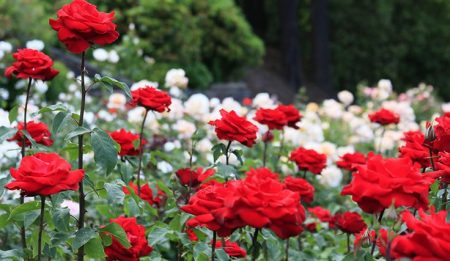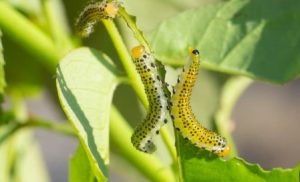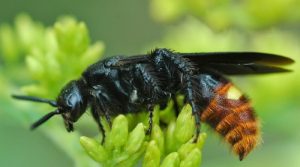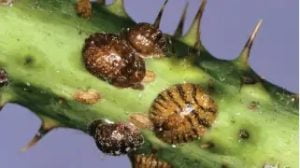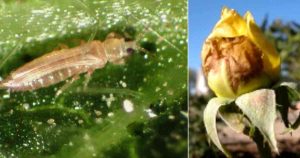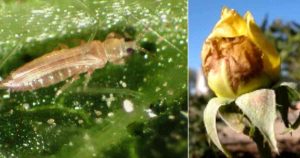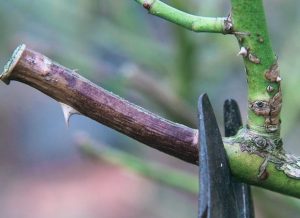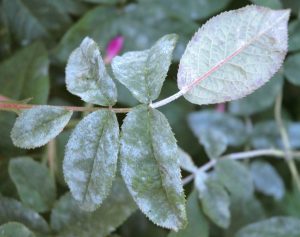Cultivating roses may seem like an easy task, but there are some tips that you need to keep in mind to properly cultivate roses. You will not just end up with beautiful roses; you will also be able to save money and time while doing so. Read this article to know more about cultivating roses, rose cultivation, and rose farming.
[su_heading size=”20″ align=”left” margin=”30″]Introduction[/su_heading]
Rose is a symbol of beauty and grace. It is a winter flower. But now roses are cultivated throughout the year. Rose is called the queen of flowers because of its color, smell, elegance, and beauty. Rose is the favorite flower of flower lovers. As they can easily adapt to the different climates of different countries, roses are cultivated more or less throughout the year in all countries of the world. Roses are generally widely used as cut flowers. Also on social and religious occasions, there is no pair of roses to decorate gardens, lawns, gardens, or verandas. The use of roses can also be observed in the perfumery industry.
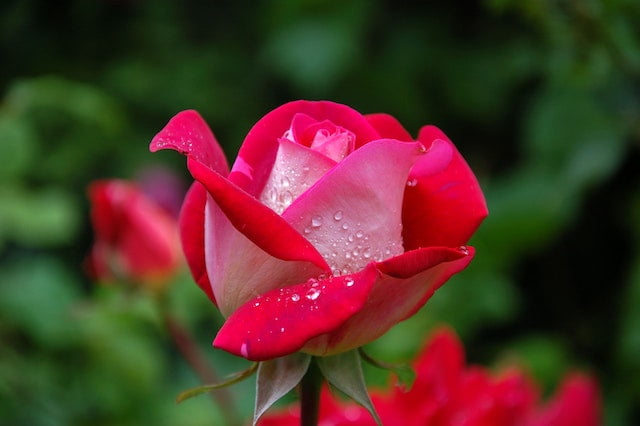
Pink Rose. Image
[su_heading size=”20″ align=”left” margin=”30″]Which Climate and Soil Suitable For Cultivate Roses?[/su_heading]
Roses are flowers of cold and temperate zones. Roses do not do well in hot and humid conditions. Temperatures of 22-30 degrees Celsius, 85% relative humidity and 100-125 cm of average annual rainfall are suitable for rose cultivation. Well-drained and fertile loamy soil with a pH value of 6.0-6.5 is best for rose cultivation. Flower quality depends largely on the presence of sunlight. In this case, the morning sun is more effective than the afternoon sun.

Soil. Image
[su_heading size=”20″ align=”left” margin=”30″]Which is The Most Beautiful Variety of Roses?[/su_heading]
There are many species of roses in the world. Among the 6 most beautiful roses in the world based on rose cultivation and beauty…
- Victor Hugo Rose.
- Winchester Cathedral Rose.
- Gold Medal Rose.
- Black Baccara Rose.
- Michelangelo Rose.
- Rose By Sara Verdier.
[su_heading size=”20″ align=”left” margin=”30″]Rose Propagation Methods[/su_heading]
Roses are generally propagated by Seed, Cuttings, Small grafting, and Eye grafting. Propagation by seed is used only in breeding or crop improvement programs.
Cuttings are generally used to cultivate roses 3 methods of rose propagation are discussed below.
1. Small Grafting:
3-5 cm of the bark of a healthy strong branch of the tree from which the sapling is to be made should be cut round with a sharp knife. After that, loamy soil and rotted dung manure should be mixed in equal parts and should be applied by hand on the barked area. The soil is then covered with polythene. It does not allow soil water to dry up, moreover, when the roots come out, it is convenient to see from outside. If the water dries up, water should be injected with an injection syringe. Roots emerge within 5-6 weeks. Then half of the first round is just below the polythene tie and after 2/3 days the other half is loosened the grafting is kept in the shade for 2/3 days and then the polyethylene tie is opened and planted in the soil.
2. Branch Grafting:
Strong and perfect branches should be selected for making branch grafts. About 20-22 cm long, the stem of the pen should be cut in such a way that the upper head is equal and the lower head, i.e. the head that will be planted on the ground, is triangular. A few leaves and thorns below the branches should be broken off and buried in the soil mixed with organic manure and fertilized regularly. grafts are produced within 6/7 weeks. Varieties of roses that have fewer stems often do not want to be grafted.
3. Eye Grafting:
A large number of seedlings can be produced in a very short time by eye grafting. In this method, the buds of good varieties of roses are planted with the branches or stems of wild rose trees. In this method, native wild rose plants are used as rootstock. Because even if their flowers are not of good quality, they can survive by adapting to the local climate. In the month of Ashad-Shravan, the cuttings should be cut and planted.
In this method, a very small sharp knife is placed at the growing stem of the root tree or at the base, like the English letter T, in the cut place of the root tree so that the bud is outside. In this way, the bud should be placed and tied with thin polythene tape and the root part of the plant should be cut off. In this way, keep it in the shade for 3/4 days and then put it in the sun. The first few days should be watered so that the junction of the buds does not get wet. Care should be taken to ensure that the roots do not grow in any bud of the plant. If they grow, they should be broken. Seedlings will emerge from the original bud within 2-3 weeks.
[su_heading size=”20″ align=”left” margin=”30″]What is The Best Location For Cultivate Roses? Land/Site Selection[/su_heading]
High plains with plenty of sun and open air should be selected for rose cultivation. The land has to be deeply plowed or plowed to turn its soil. Weeds, pieces of brick, etc. are picked from the land and the soil is made very smooth, soft, and level by plowing again and again. In order to have a good quality large garden, the beds should be prepared in May-June just before monsoon so that the clay and other materials of the bed are well decomposed and suitable for October planting. A water drainage system should be kept around the bed so that water does not accumulate.
[su_heading size=”20″ align=”left” margin=”30″]How To Prepare Soil For Cultivate Roses? Holes and Beds[/su_heading]
For small gardens, make the beds at least 3 weeks before planting. If the weather is dry, drenching the bed with water after making it will decompose the manure and compost and make the bed suitable for planting.
After making the bed, for planting seedlings, holes are made at different distances for different varieties, such as Dwarf Polyantha 0.5 m, Floribunda, and China 0.65 m, Hybrid T 1 m, Hybrid Perpetual, Mon and Damask, and T 1.50 m, Noisette-2.0 m.
Different varieties of trees are planted in rows, which facilitates fertilizer application, water irrigation, and other maintenance work.
For planting, a 1-meter deep and 0.65-meter diameter round hole should be made. At the time of digging, the top 20-22 cm of soil should be kept loose and the remaining soil should be filled with one-third of the amount of rotted cow dung, half a kg of mustard seeds, 18 kg of T.S.P. Then compost, green manure, etc. should be mixed with the separated soil and put in the hole and see that the hole area is higher than the adjacent land.
If planting is required within a day or two of making the bed, then compost or rotted cow dung should be added. Mustard leaves and chemical fertilizers should be used after planting. If dung manure is used more, it will work even if no urea is given. In this case, mustard leaves should be soaked for 4/5 days, mixed with water, placed around the root, and mixed with soil for 3/4 days.
[su_heading size=”20″ align=”left” margin=”30″]How To Plant Rose Seedlings For Cultivate Roses?[/su_heading]
Usually rose seedlings are kept in polythene bags, so the bag has to be torn and thrown away at the time of transplanting. Then the plant should be inserted in the hole in such a way that the root of the seedling should be under the soil as much as it was before, even after planting in the hole. After placing the saplings in the hole, some rotted cow dung and peat sand or loam soil should be mixed well and sprinkled around the roots. Then the root of the plant should be watered by pressing well with the soil. After planting, shade should be provided to protect the plant from the first sun. When the tree grows, you have to water it after understanding the soil. It is necessary to water frequently in case of sandy soil and after 2/3 days in case of clay soil or heavy soil. However, care must be taken to avoid waterlogging.
If the roots of the rose have hard soil, then before planting the plant, the soil should be softened by soaking it in water so that the roots can grow properly.
For seedlings that do not have soil at the base, before planting those seedlings in the soil, soak them in water for 2/3 hours and then plant them.
If the old tree is to be replaced, first of all, the young tips, dead branches, etc. should be cut well with a sharp knife or scissors. Then the plant should be lifted by digging a lot of space around the roots so that very few roots are cut. The plant should be planted in the hole in the same manner and watered abundantly and shaded for at least 2/3 days. It is better not to change the place of old plants during hot days during the dry season.
[su_heading size=”20″ align=”left” margin=”30″]How To Apply Fertilizer in Cultivate Roses?[/su_heading]
Fertilizers should be given from time to time according to the needs of the plant. However, once in October at the time of tree pruning, and another time in March. Fertilizers applied 10-12 days after pruning instead of fertilizing at the time of pruning give good results.
Before Pruning (Per Every Tree) Should be applied.
| Serial No. | Name of Fertilizers | Quantity |
| 01 | Dry Cow Dung Manure / Compost | 2-3 KG |
| 02 | Triple Super Phosphate (TSP) | 50g |
| 03 | Muriate of Potash (MOP) | 50g |
Remove 10 cm of soil from the top of the bed and loosen the bottom soil a little and mix the fertilizers with the soil carefully so that there is no damage to the roots. Poultry droppings are good fertilizers for roses.
If the fertilizer is mixed with water, it should be applied to wet soil. Plants absorb chemical fertilizers very quickly. Applying liquid fertilizers to dry soil can damage plants. So liquid fertilizer should be given when the soil is wet. Water should be irrigated after the application of liquid fertilizers. Many times it is seen that the leaves of the tree are not getting fresh after pruning or the tree is not growing properly even though there is enough fertilizer in the soil. In this case, foliar application of fertilizer gives good results.
[su_heading size=”20″ align=”left” margin=”30″]How Do You Increase Flowering in Roses?[/su_heading]
Apply fertilizer to the leaves for good flower production in Cultivate roses. Foliar fertilizers and foliar sprays are increasing in popularity for better rose flower production. This fertilizer has to be prepared by mixing some chemical fertilizers. Foliar spray should be done by 8 am on a sunny day. Two types of foliar fertilizers are used in plants, one to improve plant health and flowering and the other to provide trace elements, such as urea, di-ammonium sulfate, and di-potassium phosphate 10 grams each in 10 liters of water to make a spray solution. For trace elements, magnesium sulfate 20 grams, manganese sulfate 15 grams, ferrous sulfate 10 grams, and borax 5 grams should be mixed at the rate of 2 grams per liter of water and sprayed.
Either of the two foliar fertilizers can be sprayed with an insecticide or herbicide, but the two fertilizers cannot be sprayed together. Foliar fertilizers are essential for tub roses and beneficial for ground roses.
While spraying, care should be taken to cover both sides of the leaf well. It is better not to use chemical fertilizers without knowing the correct dosage or application rules. Because, if there is a slight exception to the rules of use, there is a risk of damage to the tree. Instead of chemical liquid fertilizers, dung and mustard greens can be decomposed in water for 4/5 days and liquefied and used twice a week. This type of liquid fertilizer plays an important role in growing new branches and flower sizes. If weak plants are mixed with urea at the rate of 2 grams per liter of water and sprayed on the leaves in the morning and afternoon, the plants are refreshed.
[su_heading size=”20″ align=”left” margin=”30″]How To Prune Rose Trees?[/su_heading]
Pruning is very important of cultivate roses. Old branches of rose plants do not want to flower for long. Every year new branches emerge from the base of the tree or from old branches. These new branches should be allowed to grow properly by pruning the tree limbs. The limbs should be pruned before the flowering season. Limb pruning is necessary to increase flower size, help new branches spread better, and remove damaged and diseased branches. Limbs are trimmed with a sharp scissor or a special type of knife. Care should be taken not to bruise the branches while cutting. This can lead to the attack of fungal diseases on the plant.
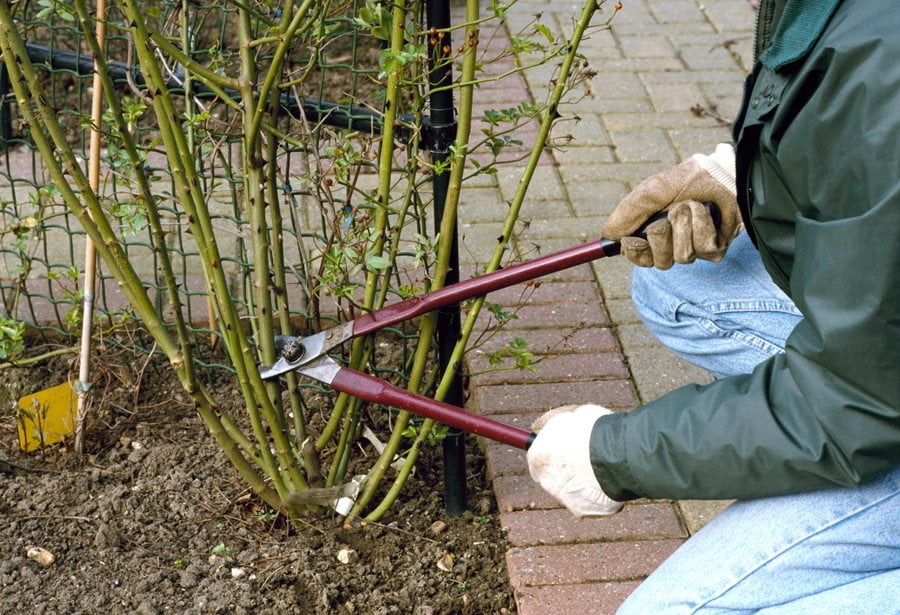
Pruning. Image.
Generally, three types of pruning are done, 1. Light pruning 2. Medium pruning and 3. Severe / Hard pruning.
- Light Pruning: Cutting off one-third of the tall branches or cutting off dead and diseased branches are called light pruning.
- Medium Pruning: Pruning by keeping 30-35 cm above the soil is called Medium pruning.
- Hard Pruning: Pruning by keeping the height of the branches 14-20 cm above the ground is called hard pruning.
The type of pruning depends on the environment, tree, and soil type. Continuous hard pruning in sand-dominant soils can kill the plant. But if the soil is good and large flowers are required for market demand or exhibition then severe pruning is applicable. In other cases, Medium pruning is required. Medium pruning flowers are not very large, but more flowers are obtained. After pruning, ‘pruning paint’ should be applied to the cut, otherwise, insect and fungal attacks may occur through the cut.
The formula for making pruning paint: Pyrifs or Syrian 1 part, Copper Carbonate 4 parts, Red Lead 4 parts, and linseed oil 5 parts. Mix all the ingredients together well to make the paint.
[su_heading size=”20″ align=”left” margin=”30″]How Do You Control Pests in Cultivate Roses?[/su_heading]
The notable insects that attack rose plants are discussed below.
1. Termites:
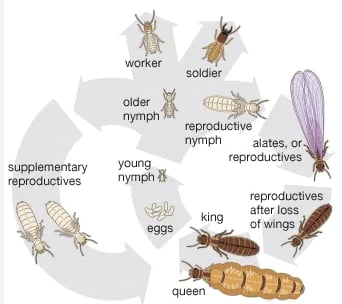
Termite. Image
After planting the cutting destroys the old roots before new roots emerge.
Control System:
If there is a possibility of weevils in the soil, treating the soil with Pyrifs or a suitable insecticide can prevent weevil infestation.
2. Small Red Spider:
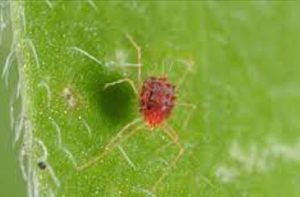
Small Red Spider. Image
The plant becomes dull as this insect sucks the sap from the underside of the leaf. Their attack can be detected by the presence of pin spots on the upper back of the leaves and fine webbing on the affected leaves and branches. If the attack is severe, the green color becomes lighter and the leaves curl. Sometimes the tree dies.
Control System:
Red spiders need to be controlled when they are few in number, or they will get out of control later. Thiovit-80 are to be suppressed by mixing a certain amount with water and spraying them on the reverse side of the leaves.
3. Chafer beetle:
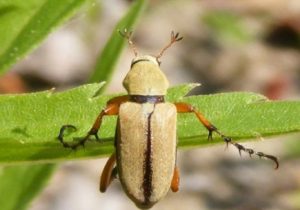
Chafer beetle. Image
This insect is big and red in color. At night they feed on leaves, feed on flower petals, and buds, and are particularly damaging to seedling growth. The attack of this insect is more during the rainy season. This insect lays its eggs in the soil and damages the roots of sports roses.
Control System:
Treating the soil with Pyrifs, Pyriban or suitable insecticides kills the pest. This insect can also be controlled by picking and killing insects at night.
4. Caterpillars:
They damage the leaves by eating them.
Control System:
Insects are easy to catch and kill if they are small or large in size. But if they are small in size and more in number, Ripcord 10 EC should be sprayed at 1 ml per liter of water or any contact poison. If it is not suppressed at once, after 2/3 days, when spraying again, the surrounding trees and grass should be sprayed.
5. Digger Wasp:
After pruning, many times they dig a tunnel through the cut part of the branch and make their nest inside. Trees with these lesions are infected by the fungus and later show symptoms of dieback disease.
Control System:
After pruning branches, this pest can be prevented by applying pruning paint on the thorn.
6. Scale Insects:
The bark of the old branches of the tree is often attacked by a brown-scale insect. They have hard scales on them. These insect spores become permanently seated and suck the sap, dulling the plant.
Control system:
This pest is controlled by spraying insecticides during the months of March-April when sports appear and after pruning. If the number of plants is low, the brush dipped in methylated spirit and rubbed on the affected branches will remove the insect. Even if the affected branches are pruned and burned, the spread of this insect is reduced.
7. Thrips:
Thrips are a Very Harmful insect of cultivated roses. Thrips attack in hot and dry weather. They attack in swarms and cause particular damage to plants by sucking the sap of flower buds and immature shoots in a short period of time. As a result, fur may or may not bloom when curled. Young leaves curl. Examination of infected tips and flowers reveals mature and immature thrips.
Control system:
Infected tips and flowers should be cut and burned and Mipsin 75 WP insecticide mixed with water at the rate of 2.0 gm per liter of water should be sprayed once a week 2/3 times and then once in two weeks regularly.
8. Aphids:
Jab beetle causes damage by sucking the sap of leaves, young tips, and flowers. It is a very harmful insect.
Control system:
Mix 2 ml of malathion per liter of water and spray every 7-10 days to control this pest.
[su_heading size=”20″ align=”left” margin=”30″]How Do You Control Rose’s Disease?[/su_heading]
Rose plants are susceptible to fungal and nutrient deficiency diseases. Fungal diseases and remedies are as follows:
1. Dieback:
The branches or stems of diseased plants turn black from the head and begin to die. The symptoms gradually spread through the stem to the roots and the entire plant dies.
Control System:
When dieback starts, the diseased branch should be cut down to the bottom, pruning paint should be applied to the cutter head, the affected part should be cut and burned, and the affected tree should be cut with a scissor or knife, and other trees should be cut with spirit.
2. Powdery Mildew:
In late winter, white powder appears on the leaves. These are fungi. If the disease is severe, the young leaves and tips of the affected plants are completely covered by these microorganisms. Buds do not bloom, perish.
Control System:
Diseased tips and leaves should be removed and burnt and sprayed with Hexaconazole5 EC or Dithen M-45 or Indofil M-45.
[su_heading size=”20″ align=”left” margin=”30″]Flower Harvest And Management in Cultivate Roses :[/su_heading]
For fresh use, cut half rose flower buds. But after a few days, the rose should be harvested after reaching the bud stage for use. As a cut flower, the flower is cut with a sharp knife with a long flower stalk with few leaves. Flowering should be done early in the morning or late in the afternoon. Lifespan can be increased by placing flowers in a solution of 3% sugar and 600 ppm 8-HQC in the vase water. Flower packaging depends on the market demand. Many producers supply flower bundles or bunches without packaging for the nearest local market.
[su_heading size=”20″ align=”left” margin=”30″]Rose Yield:[/su_heading]
The yield of roses mainly depends on the climate and variety. Long-stemmed varieties produce about 15 to 30 flowers per plant per year in ideal production conditions.
I am Gaushoul Agam
𝐂𝐨-𝐅𝐨𝐮𝐧𝐝𝐞𝐫 & 𝐂𝐄𝐎
ToAgriculture
I am an experienced Horticulture Officer in the Department of Agricultural Extension in Bangladesh. I am committed to improving agriculture and farming.
I created ToAgriculture to address global food safety concerns. These concerns are caused by a growing population, diminishing farmland, and the impact of climate change on agriculture. I assist readers in learning modern farming techniques.
I also help them control pests and diseases. Additionally, I guide managing agriculture sustainably. All of this is aimed at creating a better and more successful future in farming.
I have experience in field crops and horticulture crops. I know about fruit and vegetable farming, managing pests and diseases, irrigation, and grafting. Come with me as I share my knowledge and experiences to help you create a better future.
